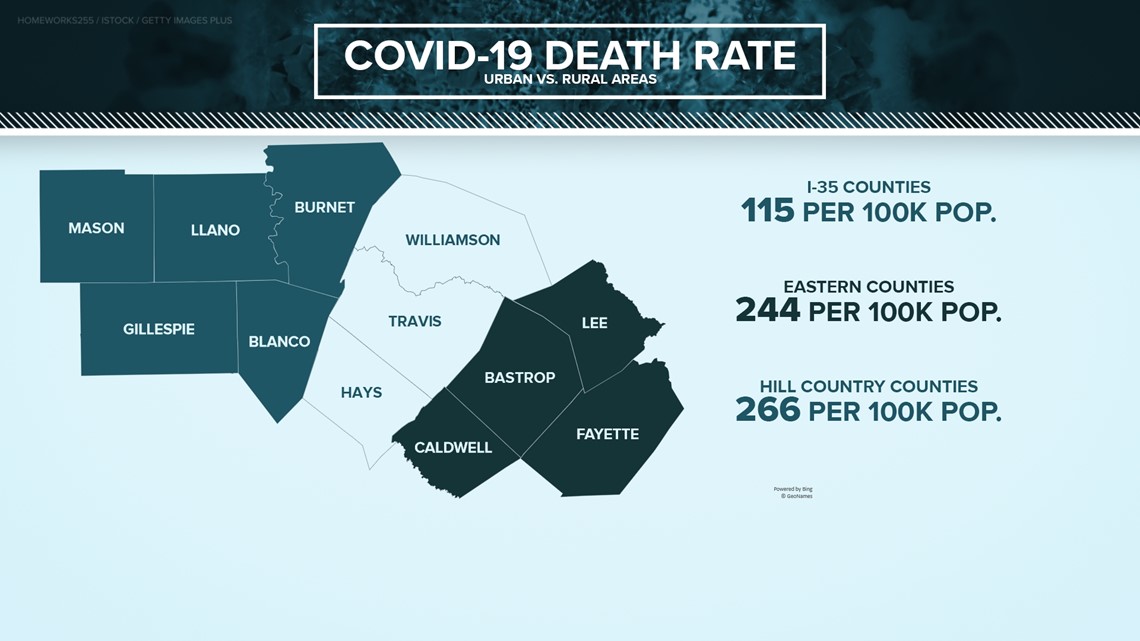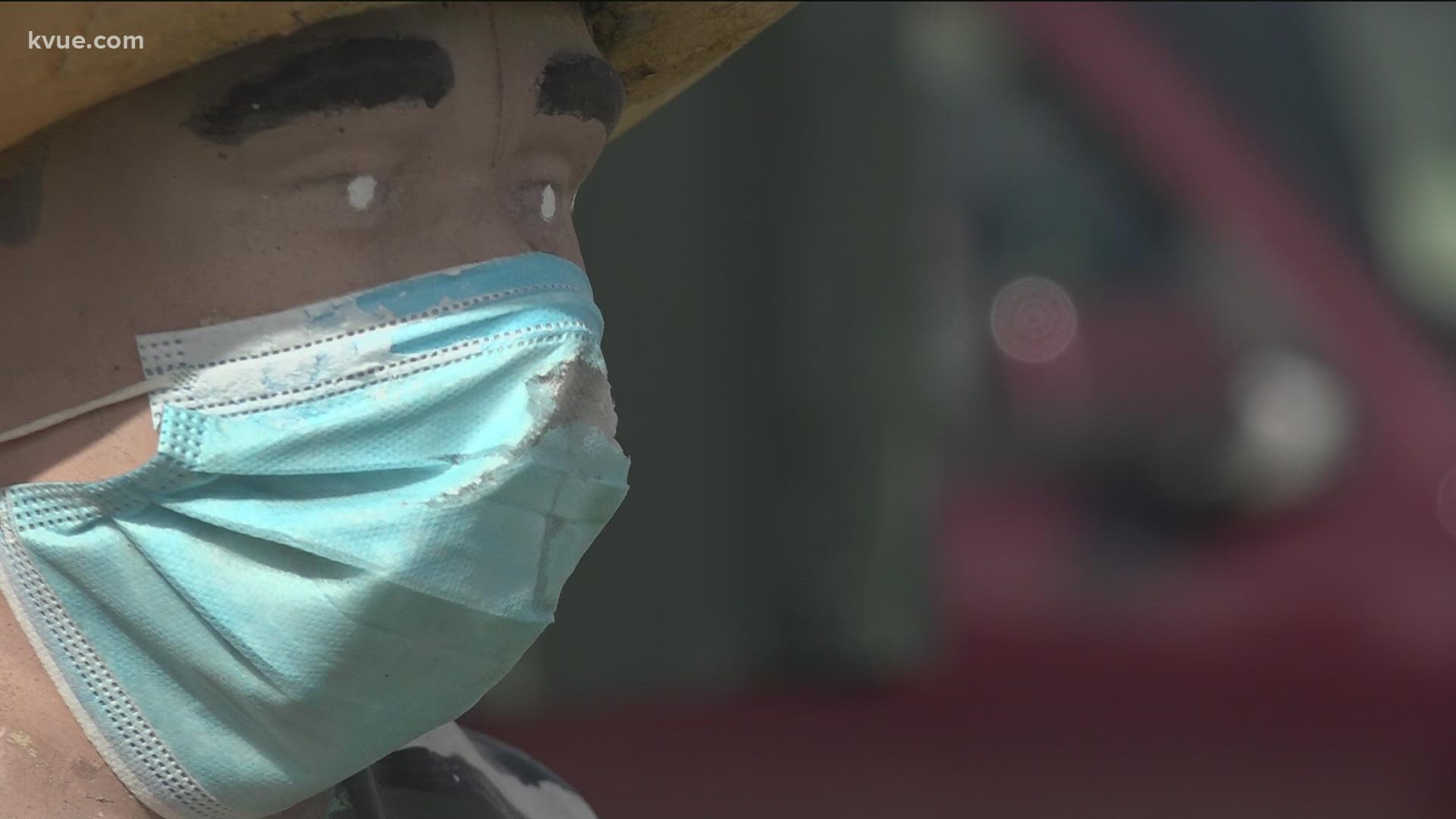KERRVILLE, Texas — For weeks, the COVID-19 pandemic has been trending in the right direction.
After a months-long surge of the delta variant of COVID-19, which strained hospital resources across Texas and the country, the number of cases, hospitalizations and deaths from coronavirus are all going down.
"We were reaching that point. We just couldn't take anymore," said Cory Edmondson, CEO of Peterson Regional Medical Center in Kerrville. "We had other hospitals throughout the state calling us to see if we had room or capacity. We just didn't."
Edmondson said his hospital, which serves a nine-county area with Kerr County as the center, was not only full but they had to call in traveling medical staff to help meet the demands of COVID-19.
The hospital sits in the middle of a fairly rural part of Texas. Edmondson said his hospital system, including the clinics in other counties, serves about 125,000 people – about 50,000 of which live in just Kerr County.
The rural counties surrounding Austin have seen a higher proportion of people dying from COVID-19 than the urban centers. As of Tuesday, Oct. 19, the rate of deaths per 100,000 people in rural counties more than doubled the same ratio in urban counties in and around Travis County.


"This delta variant that we've been dealing with throughout the fall, combined with lower overall rates of vaccination in rural Texas, has been a problem," said John Henderson, founder of the Texas Organization of Rural and Community Hospitals (TORCH). "You have increased disease transmission, increased hospitalizations among those populations. Higher death rates in rural communities. I mean, it's a problem in outcomes for rural communities."
Rural county health leaders add while vaccination rates might not be as high as urban counties, rural counties also have a higher concentration of seniors.
"Ninety-five percent of the counties in Texas have fewer people over the age of 85 per capita than we do," Craig Moreau, who heads up the Fayette County EMS and Homeland Security division, said. "We've got good strong people here that live a long, long time, but unfortunately, they are susceptible to infectious disease."
"It became rationing health care and determining who they're going to take and not take, who was going to survive, who was not going to survive," Edmondson said of San Antonio-based hospitals where he looked to send patients in need of higher levels of care. "When you lean towards an older community, the survival rate of somebody getting COVID is less likely because that's who's getting COVID as a percentage of your population and are more likely to be dying."
Both Moreau and Edmondson also said overcoming false narratives and the potential for vaccine mandates has been a particular challenge since COVID-19 vaccines were first coming out.
"If you told everyone, 'This is the absolute best shot that's ever happened in the history of the world and it's going to give you a six-pack abs and make your hair look nice' – but I just don't think you should force someone to do that," Moreau said. "People have the right in America to make a good or bad decision, and some of the heavy-handedness pushing it has pushed people away."
Moreau has organized various vaccine events across the county for months in an effort to get his county vaccinated as quickly as possible.
"There was a kind of a narrative that came out that started creating doubts in people's mind[s]. It became political in nature," Edmondson said. "I think that's what's created the hesitancy today. Science is real. But because of the politics behind all of it, people are now kind of saying, 'Well, what is science?'"
As the numbers trend in the right direction, health leaders are hopeful their communities will be okay through the holidays. They hope another surge is not around the corner but cannot tell for sure.
"I don't think it's going to happen again twice in one year, but there are variables out there that we can't control," Moreau said.
PEOPLE ARE ALSO READING:

